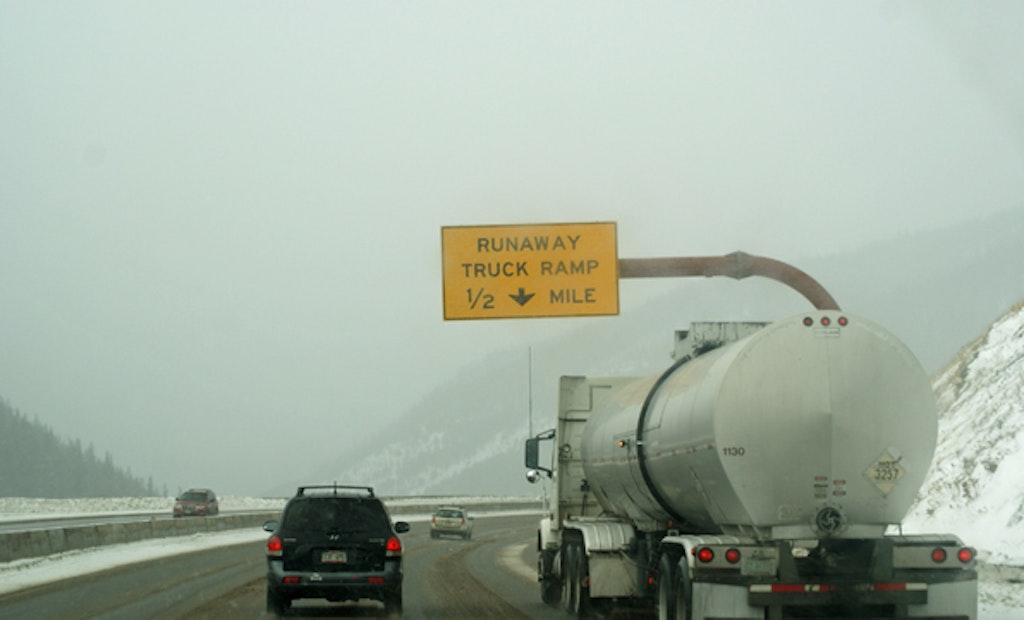
Interested in Safety?
Get Safety articles, news and videos right in your inbox! Sign up now.
Safety + Get AlertsWorking on gas and oilfield drilling pads is a dangerous occupation. But driving commercial trucks to and from drilling rigs is an increasingly risky business, too.
According to federal data from the Centers for Disease Control and Prevention, vehicular crashes caused nearly a third of the 648 oilfield worker fatalities from 2003 through 2008. Experts say the primary causes include an influx of young and inexperienced truckers and driver fatigue, stemming from exemptions for gas- and oil-industry truckers from highway safety rules that allow them to work longer hours than drivers in most other industries.
Congestion in and around well pads also increases the chances for accidents. Many counties with high levels of drilling activity have reported dramatic increases in traffic accidents – no surprise when each well requires anywhere from 500 to 1,500 truck trips to carry out hydraulic fracturing operations, a number driven by the large amounts of water required to frac each well. Moreover, there’s no end in sight to the fracking boom; exploration companies expect to drill more than 200,000 new oil and gas wells nationwide during the next decade.
Clearly, safe driving practices are more important than ever – especially with winter approaching.
Driver training 101
That’s where the Center for Transportation Safety (CTS) comes in. Based in Commerce City, Colo., a Denver suburb, the company owns about six permanent training facilities nationwide and also does on-site training courses. CTS primarily offers training to help drivers pass a CDL exam, helps companies evaluate the skills of newly hired drivers who already have CDLs and provides refresher driver-training courses, says Tony Vinciguerra, CTS vice president and general manager.
“We also offer a specific curriculum aimed at gas and oilfield drivers, which includes our normal CDL training plus exposure to techniques and experience with the type of equipment they’ll be using,” Vinciguerra says. “We provide briefing on hazardous materials and how to drive equipment with higher center points of gravity.
“Typically participants receive three to six days of classroom training and eight to 10 days where they’re physically behind the wheel on highways, dirt roads, lease roads, things consistent with what they’ll experience,” he adds. “There’s a big difference between oilfield driving and over-the-road trucking. They’re driving on dirt roads with higher crowns for drainage, divots and soft shoulders. There’s also lots of backing up and close-quarter maneuvering that puts trucks mirror-to-mirror on drilling pads.”
Mockup maneuvers
In some situations, where it’s too dangerous to teach drivers certain techniques while they’re behind the wheel, students use driving simulators, similar to what airlines use to teach pilots. “We specifically address rollover issues with vehicles that have high centers of gravity, like water tanker trucks and cement trucks,” Vinciguerra says.
“We also use simulators to teach soft-shoulder recoveries,” he adds. “We want drivers to pull back onto the road when it’s safe to do so, and avoid over-steering, which can lead to rollovers. In some situations, it’s safer to follow the contours (of the shoulder) until it’s safe to get back on – it all depends on the situation.”
Vinciguerra says CTS trainers will soon head up to Williston, N.D., for an on-site training seminar, where they’ll to teach drivers about safe winter driving.
“Drilling companies import a lot of talent to Williston – people from the South who’ve never driven in snow,” he explains. “We want them to understand what happens in skid situations so the first time they experience one isn’t a live situation.”
To learn more about CTS, visit www.centerfortransporationsafety.com.

How do you prepare your workers for risky winter driving conditions? Post a comment below.






